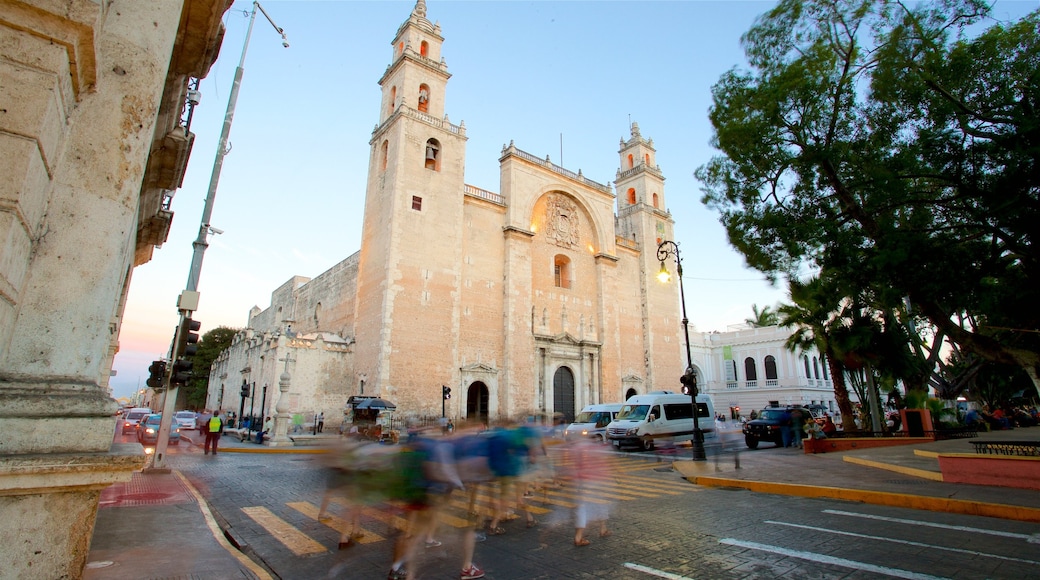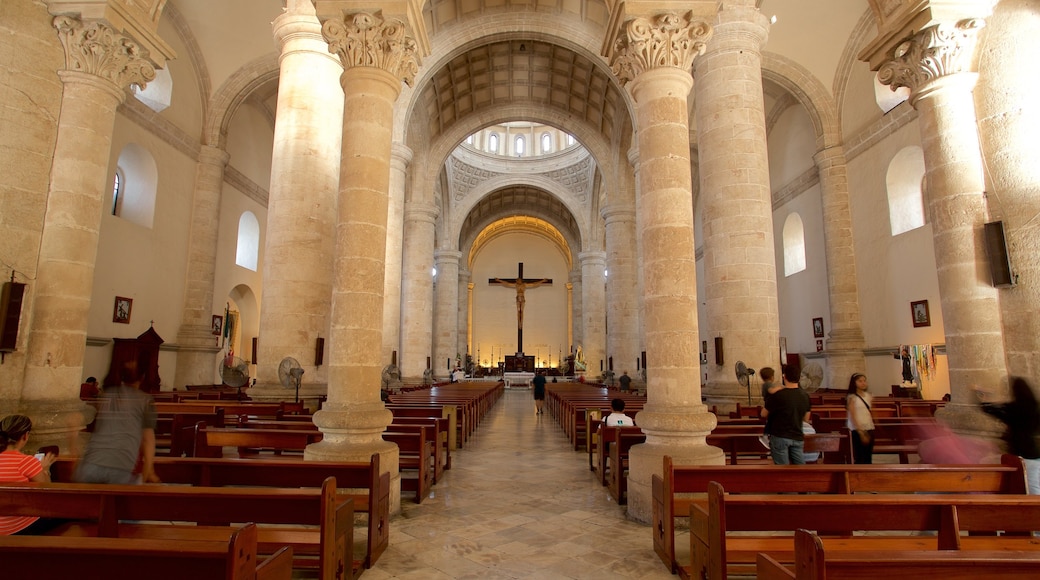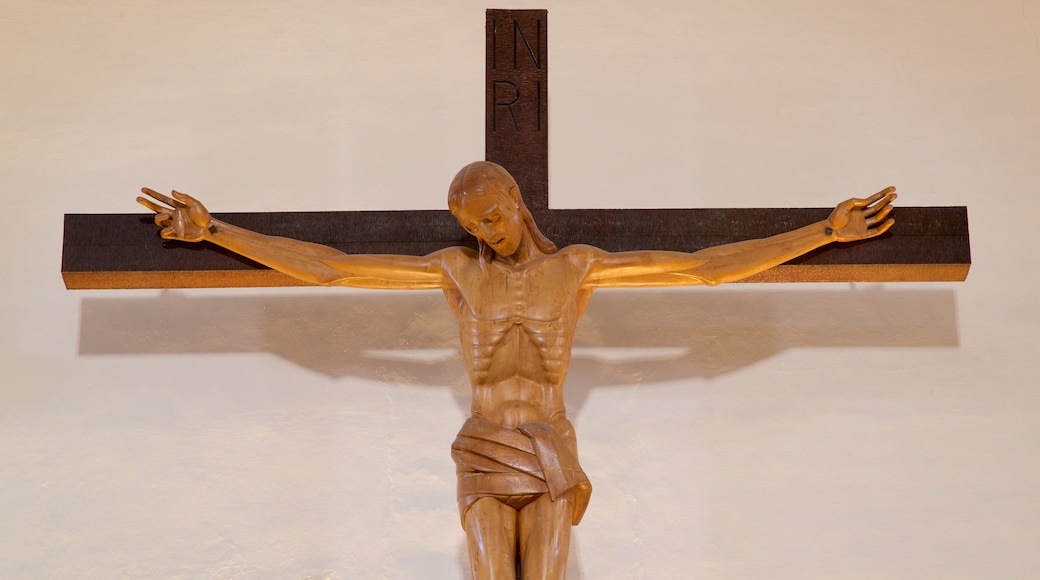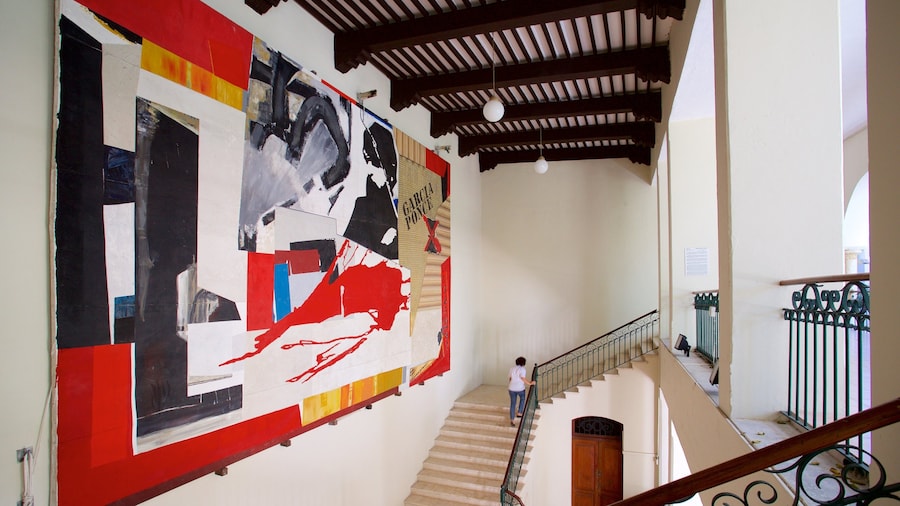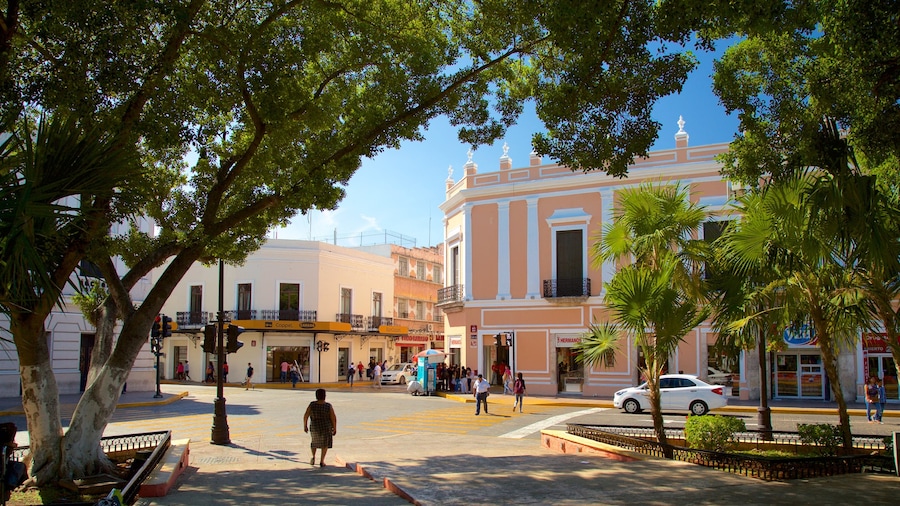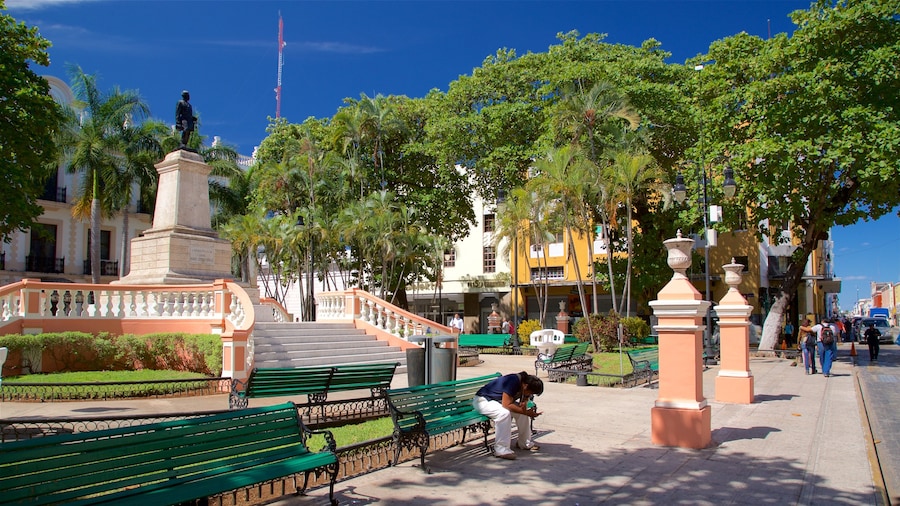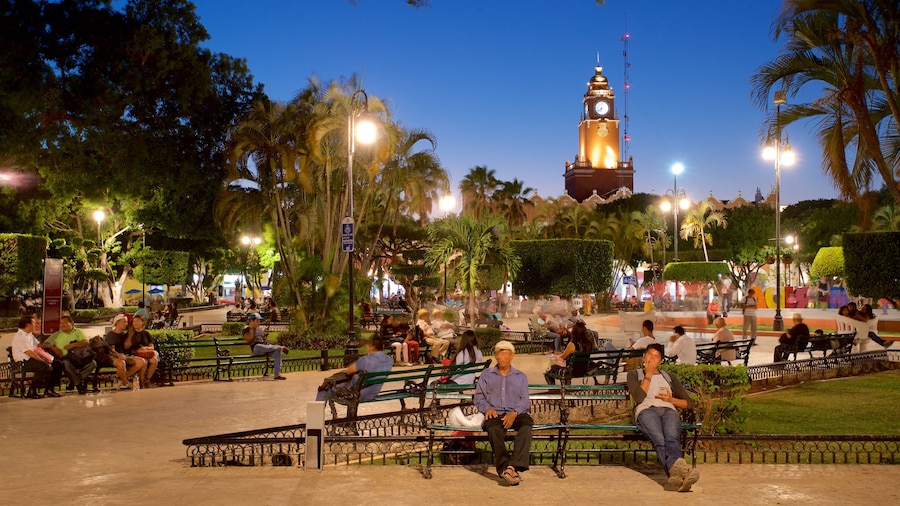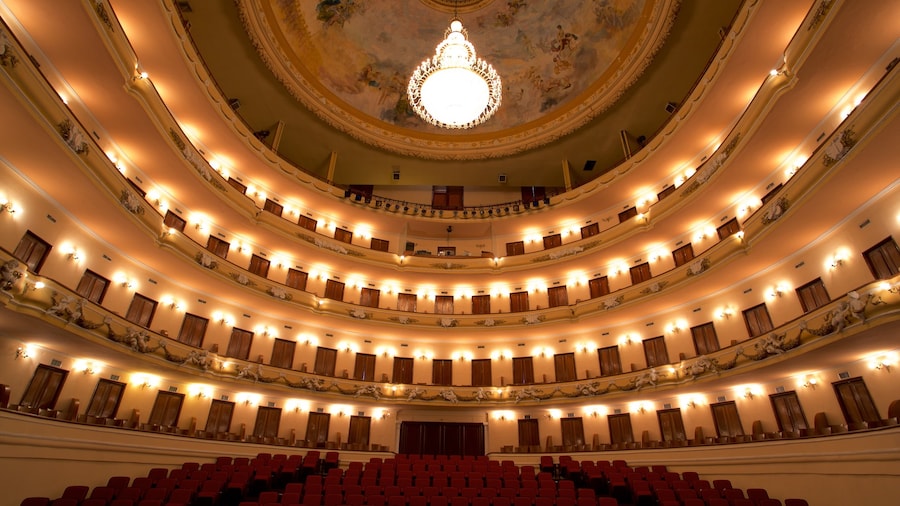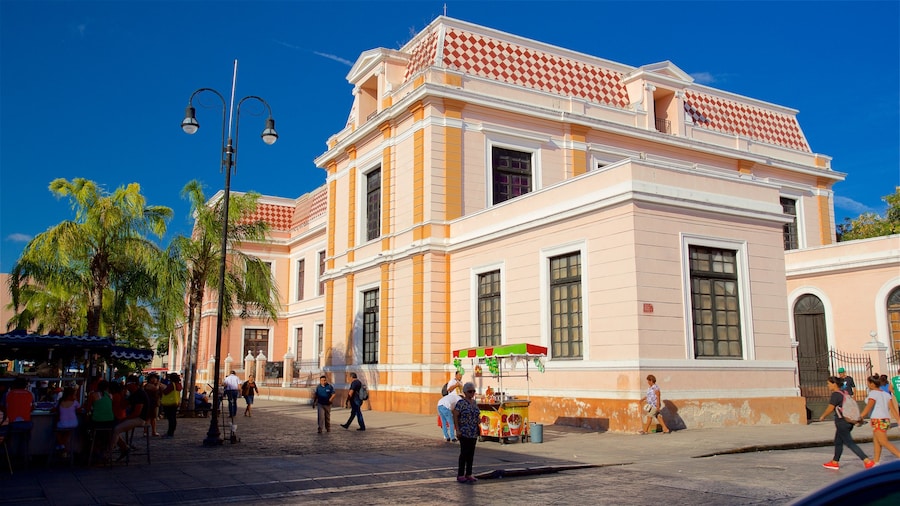Visit chapels and survey impressive works of religious art inside this ancient church, an imposing building in the historical centre of Merida.
Merida Cathedral is one of the architectural and cultural gems of the capital of Yucatan and one of the oldest cathedrals in the Americas. It was constructed in the 16th century on the site of a former Maya temple using stones from ancient Maya buildings. The building is also called the Catedral de San Ildefonso.
Look over the austere façades of the twin-towered cathedral. One of the standout features is the main door, the Door of Forgiveness, which is framed by four columns and statues of St. Peter and St. Paul. Above this entrance is the country’s post-colonial coat of arms.
While the interior, like the exterior is plain, there are several things that catch the eye. Gaze up at the huge crucifix, known as the Christ of the Unity, behind the main altar. A symbol of reconciliation between the Spanish and the Maya, the religious artwork features a wooden Christ, carved from birch on a mahogany cross that is approximately 39 feet (12 meters) tall.
View the Christ of the Blisters statue in one of the cathedral's chapels. According to a local legend, this important religious icon was carved from a tree that was struck by lighting and burned for a whole night without charring. The icon also survived another fire with just a few blisters. The figure is a replica, because the original was destroyed during the Mexican Revolution in the early 20th century.
Study the painting of Maya ruler Titul-Kiú meeting conquistador Francisco Montejo in T’hó, the ancient Maya city upon which Merida has been built.
Merida Cathedral is located on the Plaza Grande in the heart of Merida, next door to Macay Museum. Drive and park for a fee in nearby lots or arrive on foot, by taxi or public transportation. The cathedral is open to visitors every day except Sundays, although it closes for a few hours each afternoon.
